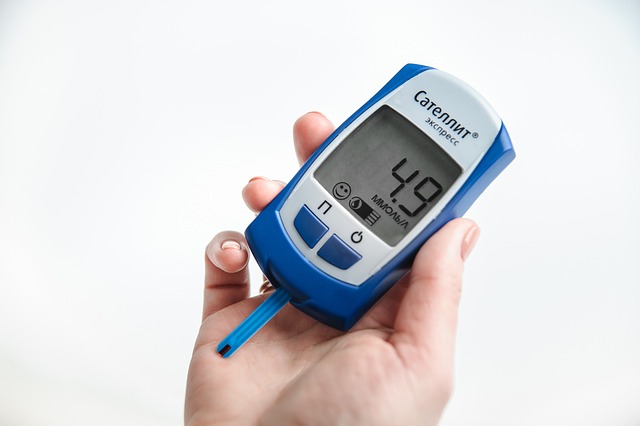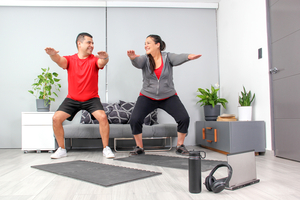Diabetes-Friendly Exercises
Congratulations! If you have diabetes and are looking for exercises to do, then you are looking into one of the best ways to control your blood sugar! Exercise lowers blood sugar to manage diabetes and reduce the risk of complications. It has plenty of other benefits, too, so here are the ones to try for great results. Just remember to get your doctor's approval before starting an exercise program, and to test your blood sugar before and after getting active so you stay safe. Here is a handy blood sugar chart for diabetics to know what "normal" blood sugar levels should be expected.
‚Äç
Walking – Better Than You'd Think!

Walking is the easiest for many people because it is natural (you probably already know how to walk!), it requires little equipment, and you can do it almost anywhere. Brisk walking increases insulin resistance and lowers blood sugar.
Tips: Sneak in walks by parking a little further away, walking on your lunch break, or getting off the bus or a stop early. Adding as little as 3 to 5 minutes at a time can help. You can walk alone or with friends, and on sidewalks, in parks, in shopping malls, or on the treadmill. You can hike or increase the incline on the treadmill to bump up the intensity. Doing chores around the house also helps, whether it be taking out the garbage, vacuuming or picking up clutter.
Bonus: Walking increases blood flow, including to your brain. You might find yourself better able to focus and more creative, while your risk for Alzheimer's and age-related cognitive decline will decrease if you walk regularly. Plus, the more you walk, the lower your risk for cardiovascular disease. [1]
"Resistance" Exercises

Relax: "strength training" does not need to mean "bulking up." Resistance training can get you toned without bigger. It improves insulin sensitivity, reduces harmful stomach fat, and lowers glycated hemoglobin (A1C). [2]
Tips: Aim to hit all your major muscle groups (hips, back, abs, arms, chest, legs, and shoulders) two or three times per week. You can use body weight exercises that require no equipment, and try cables, resistance bands, dumbbells, and weight machines. Ask a trainer at a gym to show you the ropes to improve results and prevent injuries.
Bonus: You will be stronger! You may find that daily activities are easier, from carrying groceries, to lifting your children. Resistance training also increases bone density and may reduce low back pain.
Group Exercise

Group exercise classes can make exercise fun and motivating as you burn calories and lower blood sugar. Plus, the less-predictable nature of the session improves balance and coordination.
Tips: There is sure to be something you enjoy: try boot camp, dancing, aerobics, kickboxing, step aerobics or barre-based cardio classes. Keep trying, and do not be embarrassed no matter how clumsy you feel. Everyone else is working just as hard as you!
Bonus: Many group exercise classes give you an "all-in-one" experience. Your instructor may incorporate heart-pumping aerobic activity along with strengthening exercises and stretching. Plus, signing up for a class can inspire you schedule it on your calendar and stay committed.
Cardio "Machines"

Hitting the cardio machines at the gym or at home lets you burn calories, lower blood sugar, and avoid any hot, cold, stormy, or wet weather. Try the stationary bike, stair climber, elliptical machine, and rowing machine.
Tips: A lively soundtrack can get you through your workout, or you can use the time to read a book, watch a movie, or chat with a workout buddy. You can also mix it up by doing 5 to 10 minutes on each machine.
Bonus: Regularly getting heart rate up for 15 minutes or more reduces chronic pain, which is an especially common problem in diabetics with neuropathy. Cycling and the elliptical machine can take stress off your joints while you get your cardiovascular benefits.
Yoga – For Everyone!

Yoga may lower fasting and post-meal blood glucose levels, increase insulin sensitivity and support you in your diabetes self-management efforts. No worries if you cannot stand on your head or balance on an elbow. There are many forms of yoga, including ones that are appropriate for beginners.
Tips: Hatha yoga is the typical type of yoga when you are starting out. Bikram yoga is done in a heated room and may not be safe for diabetics. Ask an instructor at your gym or in a studio which classes might be best for you and remember that most gyms and studios offer one or more trial classes or days for free.
Bonus: You may not think of it as a calorie-blasting or powerful activity, but yoga is associated with less unwanted weight gain, lower body fat, and greater muscle strength and tone.
Balancing Exercises

Exercises that help improve balance help you prevent falls. Improving balance can also make walking easier if you have diabetic neuropathy and your legs and feet are less able to feel how you are balancing on the ground.
Tips: You can balance on one foot or try standing on your toes on both feet with your eyes open or closed. Try holding a counter or table if you need it. You can also walk along a curb or line, or use equipment designed to improve balance.
Bonus: Preventing falls lowers your risk for fractures if you have osteoporosis, or low bone density. It also lowers your risk of other injuries.
Sports – Throwback?

As long as your doctor approves, playing sports can be a good way to get in your blood sugar-lowering, calorie-burning, and muscle-strengthening activities while you improve balance. It is not just the actual event or competition that gives you benefits; the training you do helps, too. Kayaking, tennis, soccer, and rock climbing all count.
Tips: Some sports may not be safe for you. Ask your doctor before you start. Contact sports and sports requiring specific movements may not be appopriate.
Bonus: Sports can reduce your risk for depression, which is especially important since diabetics have a higher risk than the rest of the population.[4] Team sports may have even greater benefits.
Stretching – Really!

Stretching may not improve glycemic control on its own, but the American Diabetes Association recognizes its value. Stretching lowers injury risk and increases flexibility to help you stay in the game.
Tips: Stretch your major muscle groups at least twice a week when you are warmed up – after a workout is best. Ask a trainer, fitness class instructor, or another fitness professional to show you proper technique for a variety of stretches.
Bonus: Stretching can improve your mood and reduce stress and anxiety.
A diabetes coaching app can motivate you to get active, track your activity, and remind you to check your blood sugar to stay safe. You may be eligible to use Lark to get help managing your diabetes.
‚Äç











.webp)






